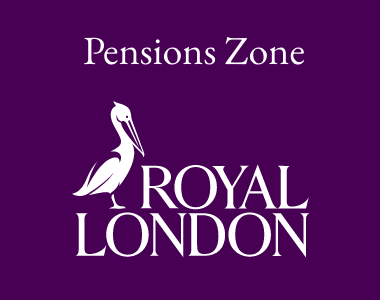When planning for long term care, clients need to handle their capital carefully, says Tony Miles, technical director, My Care Consultant, Prudential
Most people across the UK will pay something towards the cost of any social care needs, should they arise at some point in their lives*, despite repeated consumer surveys suggesting many think social care is free, like NHS healthcare. In practice, following a needs
assessment, the local authority responsible for social care will then undertake a financial assessment, to determine exactly how much an individual will need to pay from their own resources to meet ‘eligible needs’.
Understanding the rules and regulations that underpin who pays is increasingly important, as local authorities across the UK struggle to meet the social care needs of their residents, as a result of a combination of budget pressures, ageing populations, increasingly complex care needs and supply issues.
Assessing overall ability to pay
Social care is a politically devolved matter across the UK, with slightly different rules and regulations applying from country to country. However, the general approach when establishing eligibility for local authority-funded social care, involves an assessment of capital followed by a wider assessment that includes income, to assess an overall ability to pay.
The actual financial assessment (sometimes referred to as the ‘means test’) varies dependent upon whether a person will be receiving care services in their own home, which includes short breaks away, or in a residential care home or a nursing home.
Regardless of location, in most cases it will involve looking at an individual’s assets such as savings and investments and may, depending on who continues to live in it, include the value of their home. If their assets are over an upper threshold (see Table 1) they will have to pay for all their social care, subject to some country-specific variations – for example what is known as personal care in Scotland is currently free, although subject to specific criteria. If between the lower and upper capital limits, they will be deemed able to contribute, known as ‘tariff income’, from their capital, which will be added to their other qualifying income to determine ability to pay. Any capital below the lower capital limit, should be disregarded.
At this point, it’s worth stating that giving away assets or income to avoid having to pay for social care, is likely to be caught by what are known as the ‘deprivation of asset’ rules, designed to prevent individuals taking such action and where they have, treat the asset or income as if it had not been given away when it comes to the financial assessment.
How is capital treated in a financial assessment?
Capital can mean many things, and indeed the statutory guidance in England gives local authorities the flexibility to “consider the individual asset on its merits”. That said, the guidance does highlight the following: buildings, land, stocks and shares, Premium Bonds, National Savings Certificates and Ulster Savings Certificates, any savings held in bank accounts, building society accounts, SAYE schemes, unit trusts and cash. It’s important to note that personal possessions and any life insurance policies are excluded.
Ownership
In terms of ownership, a capital asset is normally defined as belonging to the person in whose name it is held, the legal owner. However, in some cases this may be disputed and/or beneficial ownership argued. Beneficial ownership is where someone enjoys the benefits of ownership, even though the title of the asset is held by someone else, or where they directly or indirectly have the power to vote or influence a transaction regarding a particular asset. In most cases the person will be both the legal and beneficial owner. In simple terms, the local authority cannot include capital (or income) that belongs to the person’s partner in their financial assessment. Joint savings will usually be halved.
How is it valued?
A local authority will need to work out what value a capital asset has, in order to take account of it in the financial assessment. In most cases, a valuation must be the current market or surrender value of the capital asset, whichever is higher, minus the following:
- 10% of the value if there will be any actual expenses involved in selling the asset
- any outstanding debts secured on the asset, for example a mortgage
Areas of misunderstanding
One area that is sometimes misunderstood, is the treatment of capital which is not immediately realisable due to notice periods, which should be considered in the normal way at its face value, regardless of access issues.
Another area of misunderstanding revolves around the exclusion of personal possessions. For example, although property that is a main residence is disregarded in respect of domiciliary care and in some scenarios where needs are to be met in a care home, it is not always clear whether property such as mobile homes, caravans or houseboats used as a main residence should be included. HMRC provides guidance on how these types of accommodation are typically dealt with from a stamp duty perspective, which can often be used to inform the local authority’s position when it is carrying out a financial assessment.
Treatment of investment bonds
Individual charging regulations that apply separately to England, Northern Ireland, Scotland and Wales all contain the following statement: “Where an investment bond includes one or more element of life insurance policies that contain cashing-in rights by way of options for total or partial surrender, then the value of those rights must be disregarded as a capital asset in the financial assessment.”
In practice, this means that investment bonds, typically with an element of life cover by way of unit allocation, are disregarded, but capital redemption bonds (CRBs), which differ from normal investment bonds in that they are not contracts of life assurance, would not be disregarded and their surrender value included.
Financial advisers and their clients need to be especially careful about ensuring that an investment bond is not specifically taken out because of care cost concerns.
Anyone who places funds into investment bonds, where a significant motive can reasonably be deduced to be the avoidance of care fees, runs the risk of triggering the deprivation rules and having the value of those bonds treated as a capital asset (known as notional capital) for the purposes of means testing.
*According to estimates by LaingBuisson, in March 2018, approximately 176,000 older people in independent sector care homes in the UK paid for all their own care (45% of the
total) with a further 44,500 (11%) receiving some state-funded support but also contributing to fees themselves.
Next week Tony looks at the handling of income when planning for long term care costs.
Table: Capital threshold 2019/2020 – England & NI, Scotland, Wales































